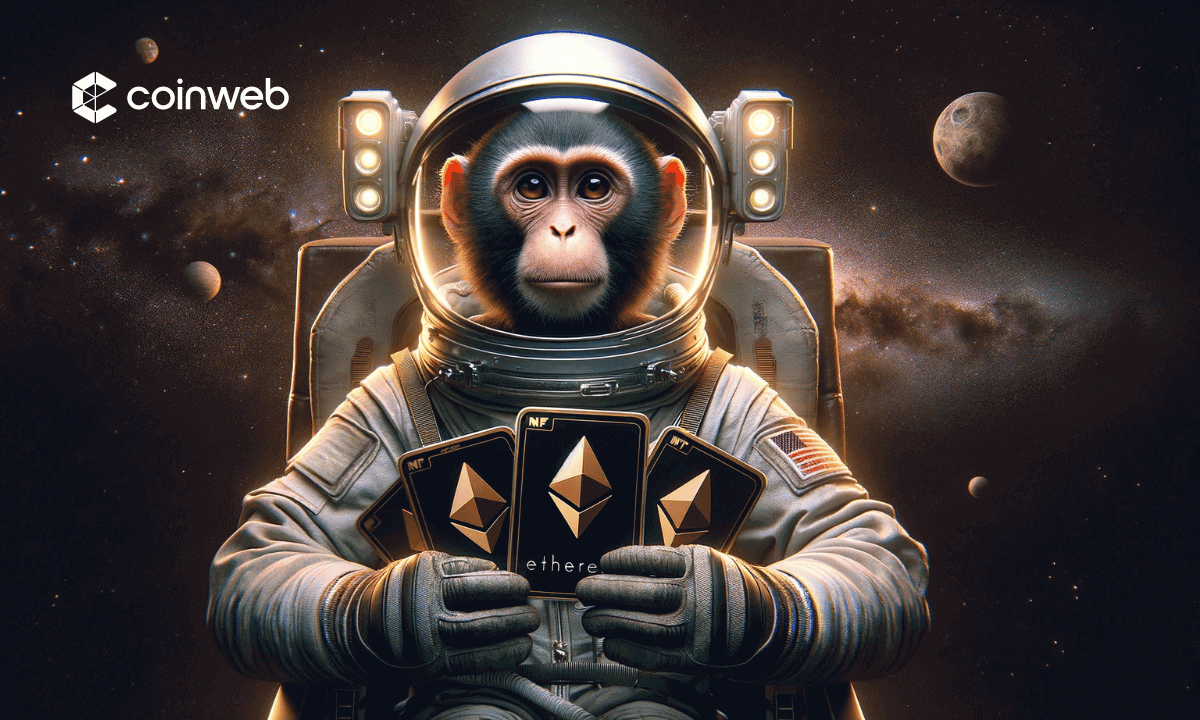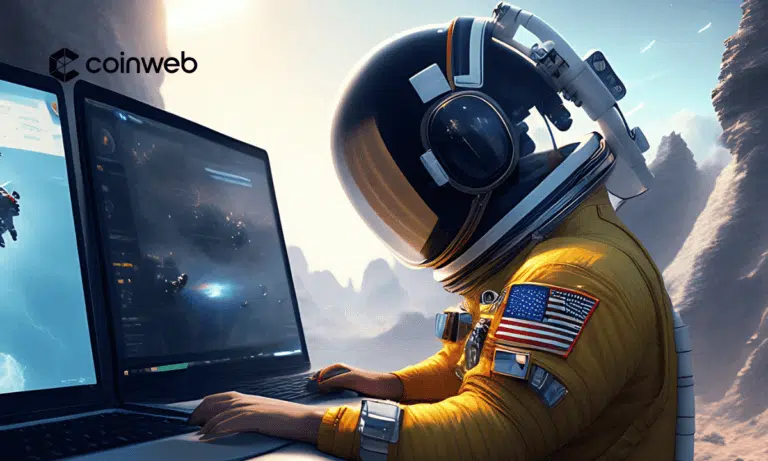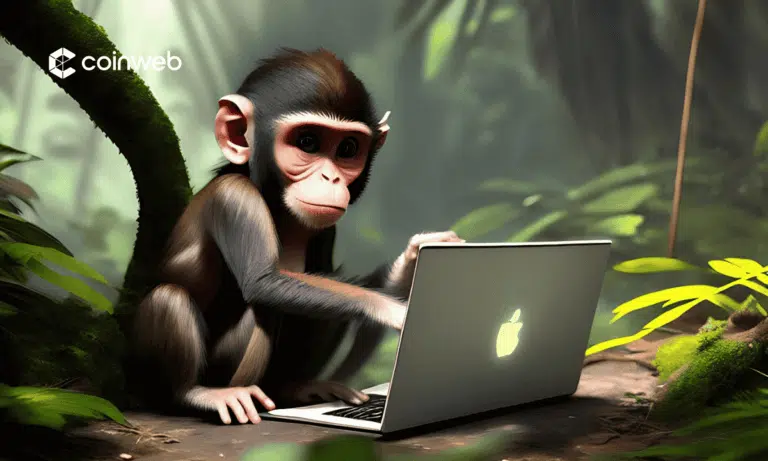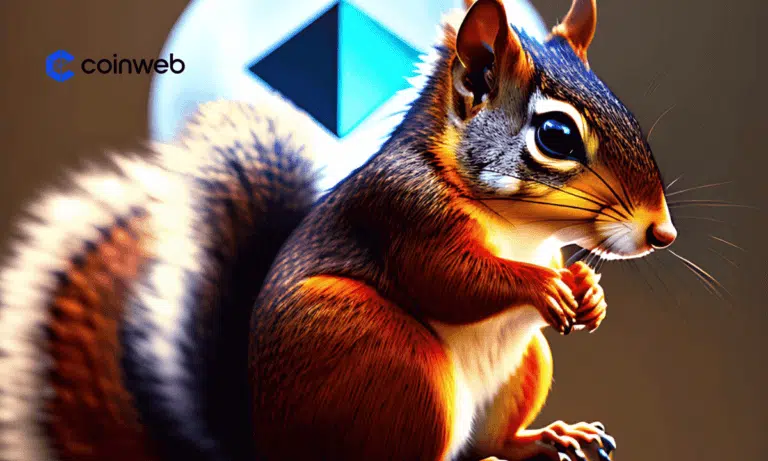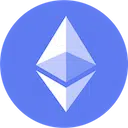Key Takeaways
- NFT DApps are decentralized applications where users can create or trade non-fungible tokens (NFTs).
- To launch an NFT DApp, define the concept, set up tools, code smart contracts, connect wallets, and add minting features. Post-launch, take care of marketing and beware of legal challenges.
NFT DApps combine the best of two worlds: Non-Fungible Tokens (NFTs) and Decentralized Apps (DApps). Ever wondered what it takes to create such an app?
With a decade of experience in blockchain and crypto and tinkering with NFTs/DApps, we’ve compiled this comprehensive guide to help you launch your own NFT DApp.
This will help you answer questions like how to launch your NFT DApp? How do you design and launch an NFT DApp? Let’s dig in!
What Are NFT DApps?

NFT DApps are applications that live on blockchain networks like Ethereum, Cardano, or Solana. No one person or entity has control over these apps because of their decentralized nature.
In these DApps, you can create, buy, sell, and trade virtual assets. Think of in-game gear, virtual land, or digital artwork. A common name for these digital assets is non-fungible tokens or NFTs.
What’s an NFT? It’s a certificate saying that you own stuff. However, here’s the catch: You can’t swap one NFT for another like you do with Bitcoin and Ethereum. Each NFT is unique.
NFTs aren’t just about proving digital asset ownership. These unique tokens can give you certain rights or unlock unique opportunities within DApps.
Imagine priority access to concerts, sports events, or exclusive rewards on your platforms. These capabilities connect the physical and digital worlds.
Gaming apps like Decentraland and NFT marketplaces like OpenSea are examples of NFT DApps.
How to Create and Launch an NFT DApp?

Step 1: Define the Concept
Before you start building your NFT DApp, defining its concept is essential. Identify the project’s goal, your target users, and standout features.
If you’re creating an NFT game, outline gameplay dynamics and unique user experiences. For a decentralized marketplace, detail the user journey in trading NFTs.
A well-defined NFT DApp concept will guide the entire development process.
Step 2: Select the Blockchain
Next, pick a suitable blockchain platform for your project. Many developers opt for Ethereum, which supports ERC-1155 and ERC-721 token standards.
The former provides flexibility for various tokens, while the latter is perfect for NFTs. Your app will be compatible with other blockchain projects by sticking with these standards.
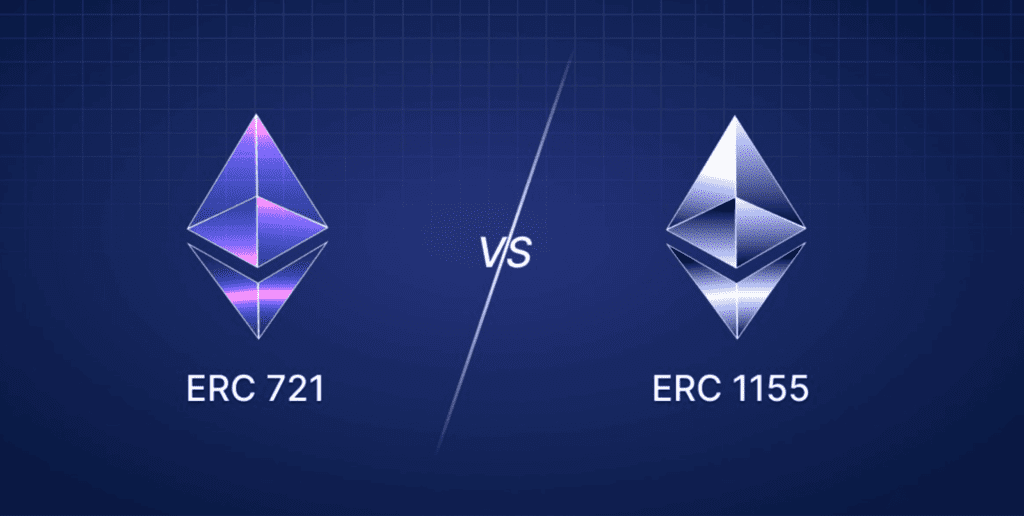
However, you don’t have to limit your choice to Ethereum only. Blockchains like Flow and Binance Smart Chain could be worthy solutions based on your project specifics. With these blockchain networks, you can ensure speedy transactions and lower user fees.
Step 3: Set up the Environment
Now, moving on to setting up the development environment. Install the external tools needed for your NFT DApp to function.
These include blockchain development frameworks (EOSIO, Corda, and Hyperledger), smart contract development kits (Solidity, Vyper, and Brownie), libraries, and plugins. Coders also call these development environment components “dependencies.”
Step 4: Create Smart Contracts
Since NFT DApps involve the flow of digital assets, it’s crucial to have a rulebook to govern NFT transactions. That’s where smart contracts come into play. These contracts establish the rules for creating and moving assets within your NFT ecosystem.
Step 5: Integrate Digital Wallets

After you develop smart contracts, it’s time to integrate the best crypto wallets. Connect your project with digital wallets and enable users to interact with your app and manage assets securely.
Trust Wallet and MetaMask are the preferred wallet solutions among blockchain developers.
Step 6: Develop Minting Features
Now, how will creators turn their unique digital assets into NFTs and confirm their genuine ownership? You must implement minting functionality – generating a cryptographic key proving digital ownership and control. Once minted, a digital asset becomes an NFT stored on the blockchain platform.
Make sure that the interface of your app is user-friendly. It should be super easy for users to upload their work, add metadata, and mint digital tokens.

Does your project’s concept involve an NFT marketplace? If so, let users buy, sell, and trade assets within the NFT ecosystem. Auctioning and bidding may also be relevant. Search options and filters would add convenience to the process.
Step 7: Test and Deploy Your NFT DApp
Now that everything is ready – test your newly developed app. Check if the smart contracts function as designed, transactions clear swiftly, and the UI is top-notch.
You can have it tested with the best smart contract audit firms, such as CertiK, Hacken, and Quantstamp.
Once you’re happy with the result, deploy the project-related assets to the chosen blockchain network. After that, your NFT DApp will become accessible worldwide!
Step 8: Launch and Market Your Project

Deploying your NFT DApp is just the beginning; your marketing efforts will also define your project’s success.
Release your smart contracts over the mainnet so users know your app’s launch. At the same time, start spreading the word about your project to maximize exposure. X is the best place to start.
Craft the compelling story behind your app to highlight its unique value proposition in a saturated market. Introduce your project to your audience on social media platforms, forums, and in crypto communities. Consider partnering with crypto influencers to tap into their circles.
Step 9: Build a Website
Develop a dedicated website for your project. Make sure it is well-designed and easy to navigate. Highlight key project features and provide user guidelines there.
Optimize your website for search engines and integrate social media for greater exposure. Consider adding a newsletter signup to let your audience stay updated.
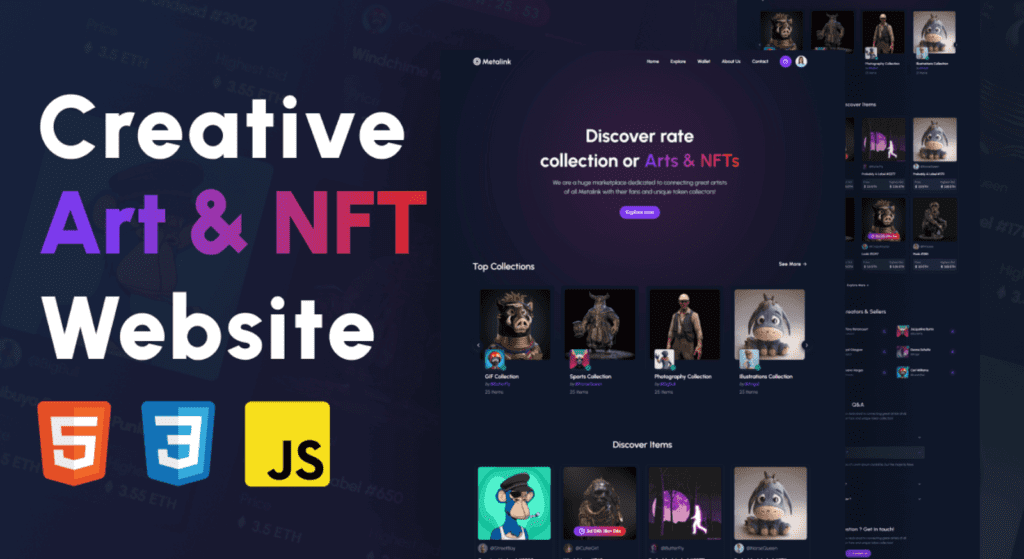
Step 10: Engage Your Audience
Community engagement is a vital ingredient for your project’s success. Foster a community feedback loop by promoting open dialog. Encourage users to share feedback and ask their questions. Address user complaints promptly and refine your app based on the feedback received.
Consider hosting special events and promotions among community members. Viral contests and other activities can drive awareness about your projects.
Step 11: Maintain Open Communication
Keep communication with your audience open throughout the entire development journey. Share updates on your project’s roadmap and announce new features added.
Continue gathering user feedback and improving your app to address the market dynamics.
What Are the Challenges of Developing NFT DApps?
Scalability
The growing popularity of NFTs results in huge transactional volumes. Withstanding high loads becomes a major challenge for most NFT DApps.
Thus, it’s vital to develop your app with scalability in mind. Ensure your project will handle a high volume of transactions and possible network congestion.
Competition
In the crowded NFT market, capturing and maintaining user’s attention is difficult. So, your newly developed has to bring value to your audience.
Define your unique selling points early, and let them guide your development process. Plus, be creative in your marketing. Identify your audience’s pain points and showcase your solution in your messaging.
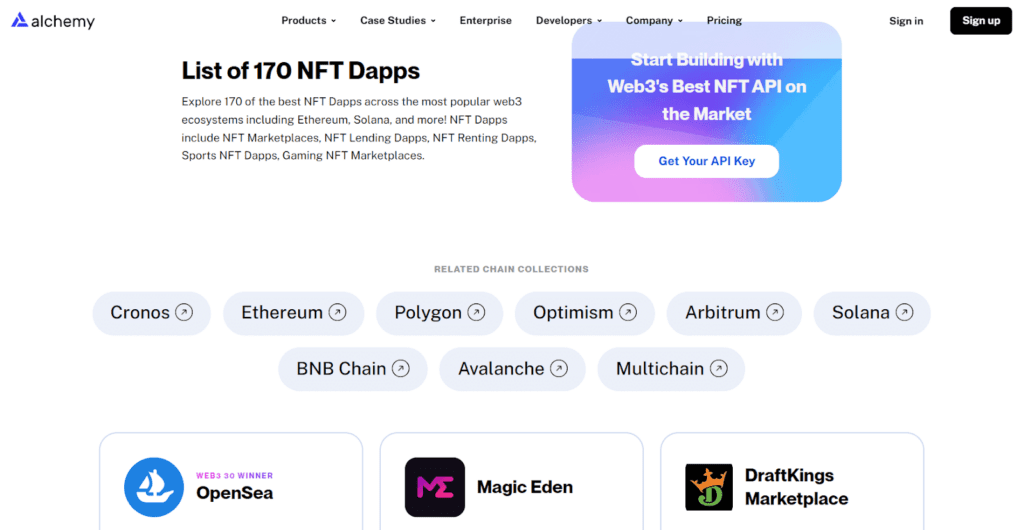
Legal Compliance
Regulatory compliance poses another challenge to blockchain developers. When working on your app, watch the legal landscape around NFTs—study your project’s tax implications, intellectual property rights, and other aspects. Implement robust security measures to protect users’ sensitive data.
How Do NFTs and DApps Relate?
NFTs and DApps both live within crypto and blockchain ecosystems. Let’s see how these components can interact with each other:
- When used in DApps, NFTs indicate digital ownership or access rights for certain assets. DApps, in turn, tokenize digital assets through the ERC-115 and ERC-721 NFT standards.
- The NFT integration in gaming DApps makes assets easy to trade on secondary markets. So, different networks and virtual worlds become compatible.
- The surging popularity of NFTs contributed to the rise of DApps focused on creating and trading NFTs.
What Types of NFT DApps Are There?
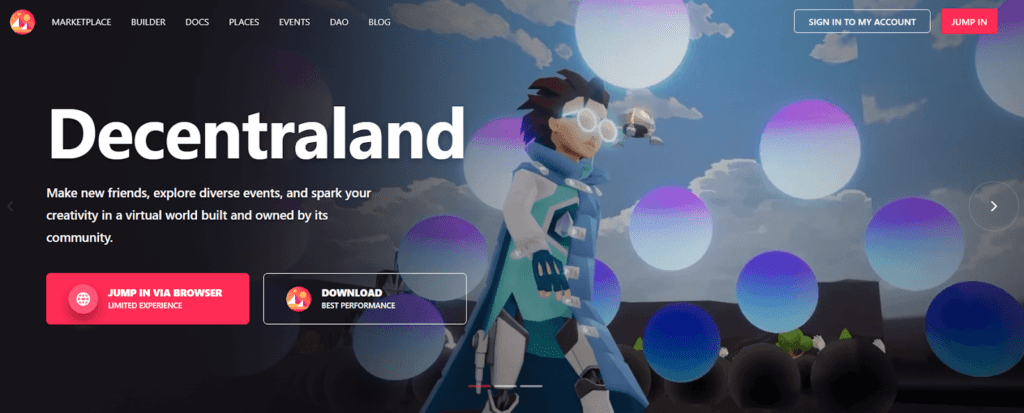
There are numerous NFT DApps out there. Based on the common use cases, we can break down the following types of NFT DApps:
- Gaming Apps and Virtual Worlds: In decentralized virtual worlds, in-game assets are no other than NFTs. NFT gaming DApps like Axie Infinity involve play-to-earn mechanics, where users can create and enhance assets and sell them for profit.
- Arts and Collectible Platforms: With these innovative platforms, creators can tokenize their artwork. Interested buyers, in turn, can purchase these original digital assets as NFTs.
- Virtual Marketplaces: A decentralized marketplace that matches creators and their fans. On marketplaces, artists can mint NFTs and put them in front of a wide audience.
- Real Estate Platforms: In real estate DApps, you can trade virtual real estate and land plots.
- DeFI and NFT Collateral: In decentralized finance, NFTs can serve as collateral. You can lend or borrow money against your NFT holdings.
What Are the Pros and Cons of NFT DApps?
Like any other solution in the digital world, NFT DApps come with certain benefits and potential drawbacks.
Benefits:
- Proven Ownership: An NFT is a stamp of approval for owning an item. No more worries about copyright infringement.
- Decentralization: No central entity acts as a boss—blockchain technology hand.
- Privacy: Your sensitive info is secure. The blockchain technology that powers NFT DApps uses solid encryption.
- Global User Accessibility: NFT DApps break borders. Creators can now showcase their work globally.
- Automation: Smart contracts in these apps automate tasks like licensing and royalty distribution.
Drawbacks:
- Vulnerability: NFT DApps, still an emerging tech, need top-notch security against scams and hacking.
- Complexity: Building these apps is a challenge, especially for beginners. Technical scalability adds complexity.
- Expenses: Ethereum’s hefty fees may hike up the development costs. Plan expenses wisely and consider alternative platforms.
Bottom Line
After reading this guide, you know what it takes to create an NFT DApp. Launching such an app can be highly lucrative with the exponential growth in NFTs and their practical applications.
Follow our shared guidance and account for challenges like legal compliance and digital property rights protection. Armed with this knowledge, you’ll be ready to confidently enter the dynamic realm of NFT DApps.
NFT DApps work based on smart contracts that govern the flow of digital assets. These smart contracts are self-executing and don’t need any intermediaries.
NFT DApps can automate NFT-related tasks like licensing and royalty distribution. The NFT industry is booming, so it’s a great chance for developers to capitalize on this market.
There is a diverse range of NFT DApps today. Some of the use cases are gaming, entertainment, decentralized finance, and virtual real estate.
It depends on your experience and technological expertise. For beginners, the intricacies of blockchain technology and smart contract development can be challenging. Plus, you need to account for the legal compliance of your NFT DApp.
In the future, we could expect new functionality, added scalability, and improved UI from NFT DApps. We could also see new use cases for these apps, with more industries adopting this tech.r


